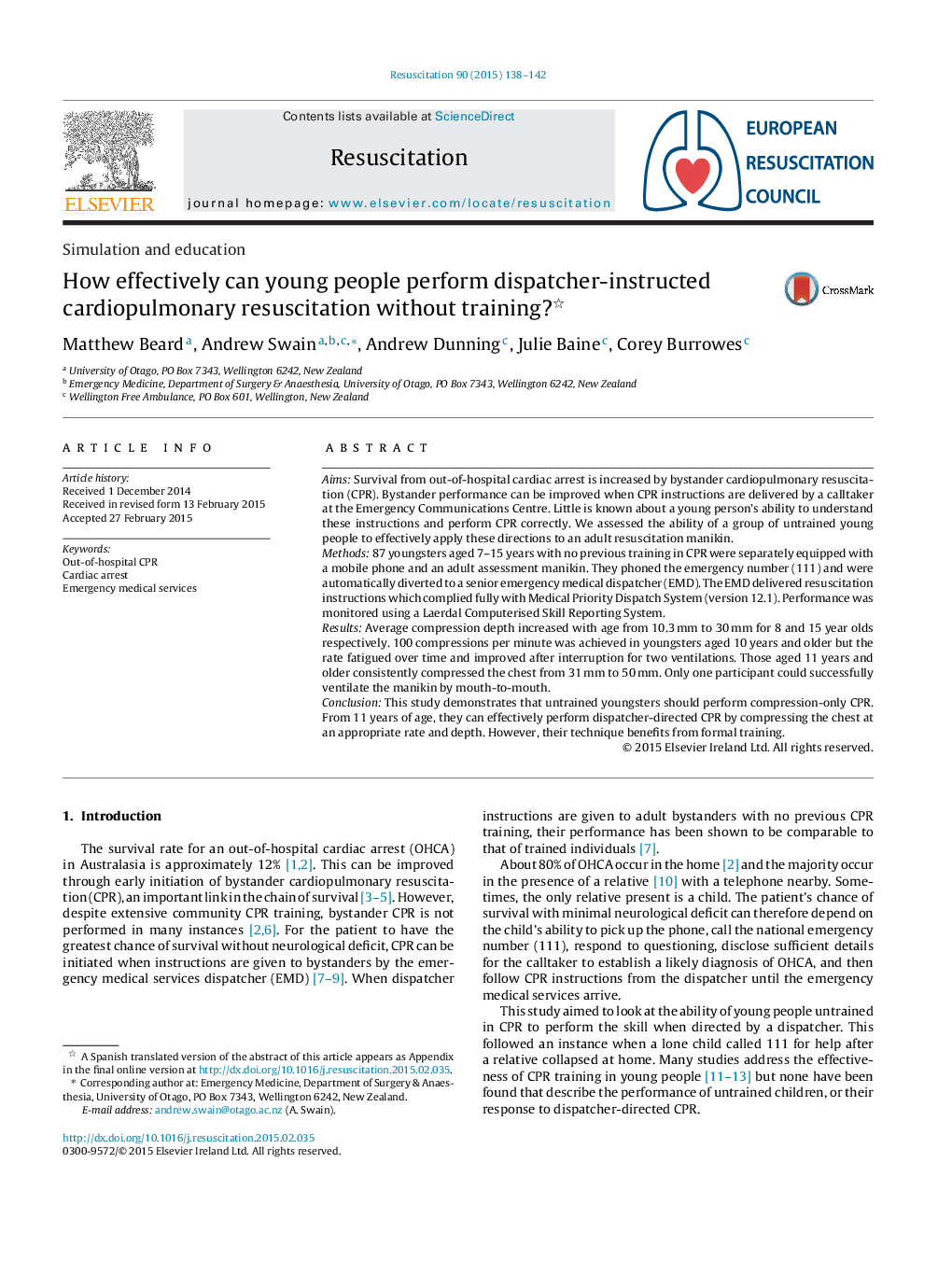| Article ID | Journal | Published Year | Pages | File Type |
|---|---|---|---|---|
| 3007954 | Resuscitation | 2015 | 5 Pages |
AimsSurvival from out-of-hospital cardiac arrest is increased by bystander cardiopulmonary resuscitation (CPR). Bystander performance can be improved when CPR instructions are delivered by a calltaker at the Emergency Communications Centre. Little is known about a young person's ability to understand these instructions and perform CPR correctly. We assessed the ability of a group of untrained young people to effectively apply these directions to an adult resuscitation manikin.Methods87 youngsters aged 7–15 years with no previous training in CPR were separately equipped with a mobile phone and an adult assessment manikin. They phoned the emergency number (111) and were automatically diverted to a senior emergency medical dispatcher (EMD). The EMD delivered resuscitation instructions which complied fully with Medical Priority Dispatch System (version 12.1). Performance was monitored using a Laerdal Computerised Skill Reporting System.ResultsAverage compression depth increased with age from 10.3 mm to 30 mm for 8 and 15 year olds respectively. 100 compressions per minute was achieved in youngsters aged 10 years and older but the rate fatigued over time and improved after interruption for two ventilations. Those aged 11 years and older consistently compressed the chest from 31 mm to 50 mm. Only one participant could successfully ventilate the manikin by mouth-to-mouth.ConclusionThis study demonstrates that untrained youngsters should perform compression-only CPR. From 11 years of age, they can effectively perform dispatcher-directed CPR by compressing the chest at an appropriate rate and depth. However, their technique benefits from formal training.
